Front Case Half
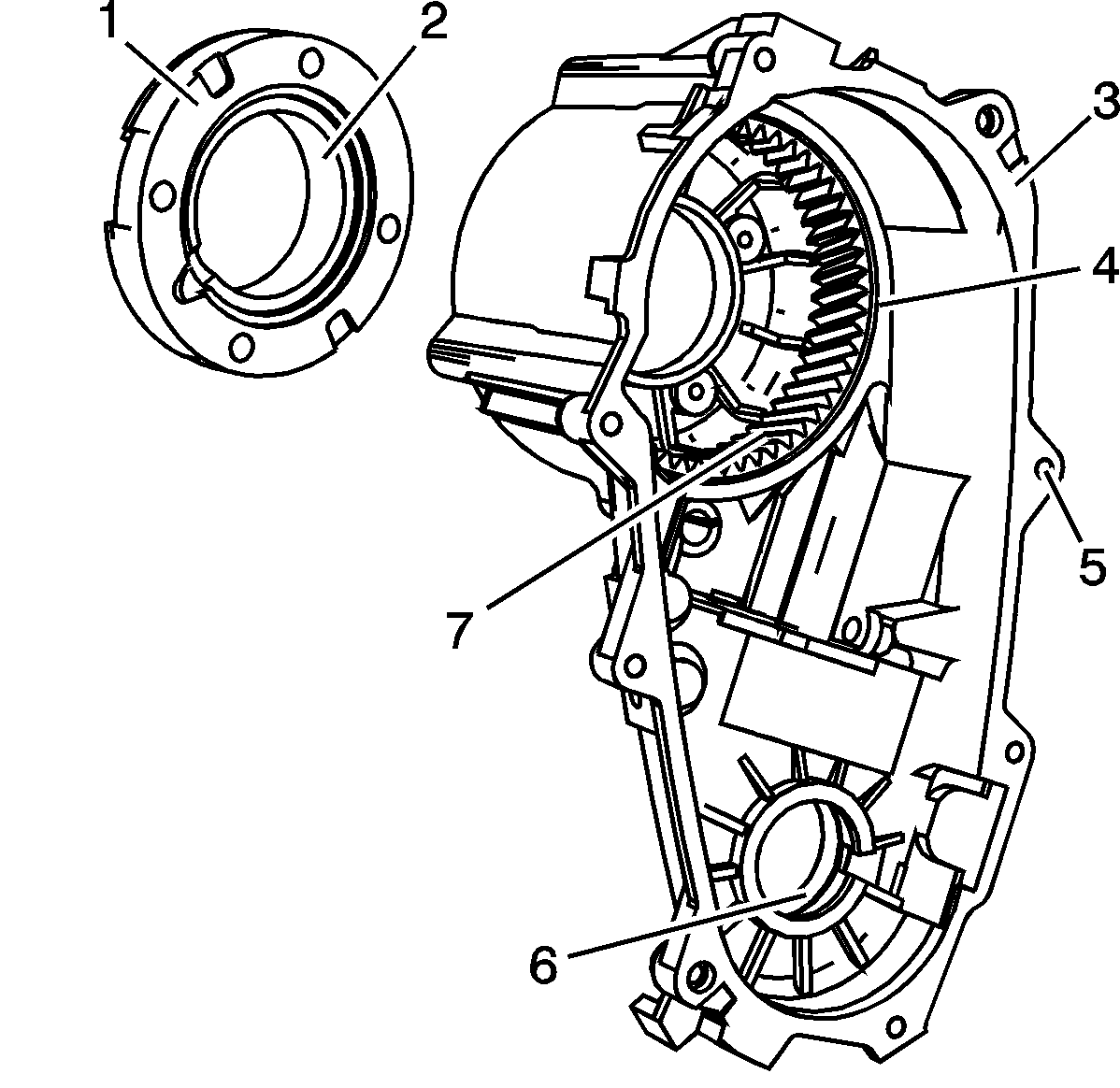
- Clean the front case half and the input bearing retainer
in cleaning solvent and air dry.
Notice: Refer to Machined Surface Damage Notice in the Preface section.
- Remove the sealer from the case sealing surfaces.
- Inspect the case for being broken or cracked.
- Inspect the front output shaft front bearing bore (6) for the
following conditions:
- Replace the front case half if any of the above conditions are found.
- Inspect the sealing surfaces (1 and 3) for damage.
- Repair small scratches or nicks with a soft stone.
- Inspect the front case to transmission case mounting surface for damage.
- Inspect the case threaded bolt holes (5) for damage.
- Repair any damaged threads.
- Inspect the retaining ring (4) of the annulus gear to ensure it
is properly seated.
- Inspect the annulus gear (7) for the following conditions:
| • | Debris embedded in the root of the teeth |
- Replace the front case half if the annulus gear is damaged.
- Inspect the sector shaft bore and seal for the following conditions:
- Replace the front case half if the sector shaft bore is faulty. Refer
to
Transfer Case Disassemble
and
Transfer Case Assemble
.
- Inspect the location pins for being loose or missing.
- Repair or replace any damaged location pins.
- Inspect the input shaft bearing bore (2) for the following conditions:
- Replace the input bearing retainer if faulty.
- Inspect the front output shaft front bearing and the input shaft bearing
for the following conditions:
- Replace the bearings if any of the above conditions are found. Refer
to
Transfer Case Disassemble
and
Transfer Case Assemble
.
Rear Case Half
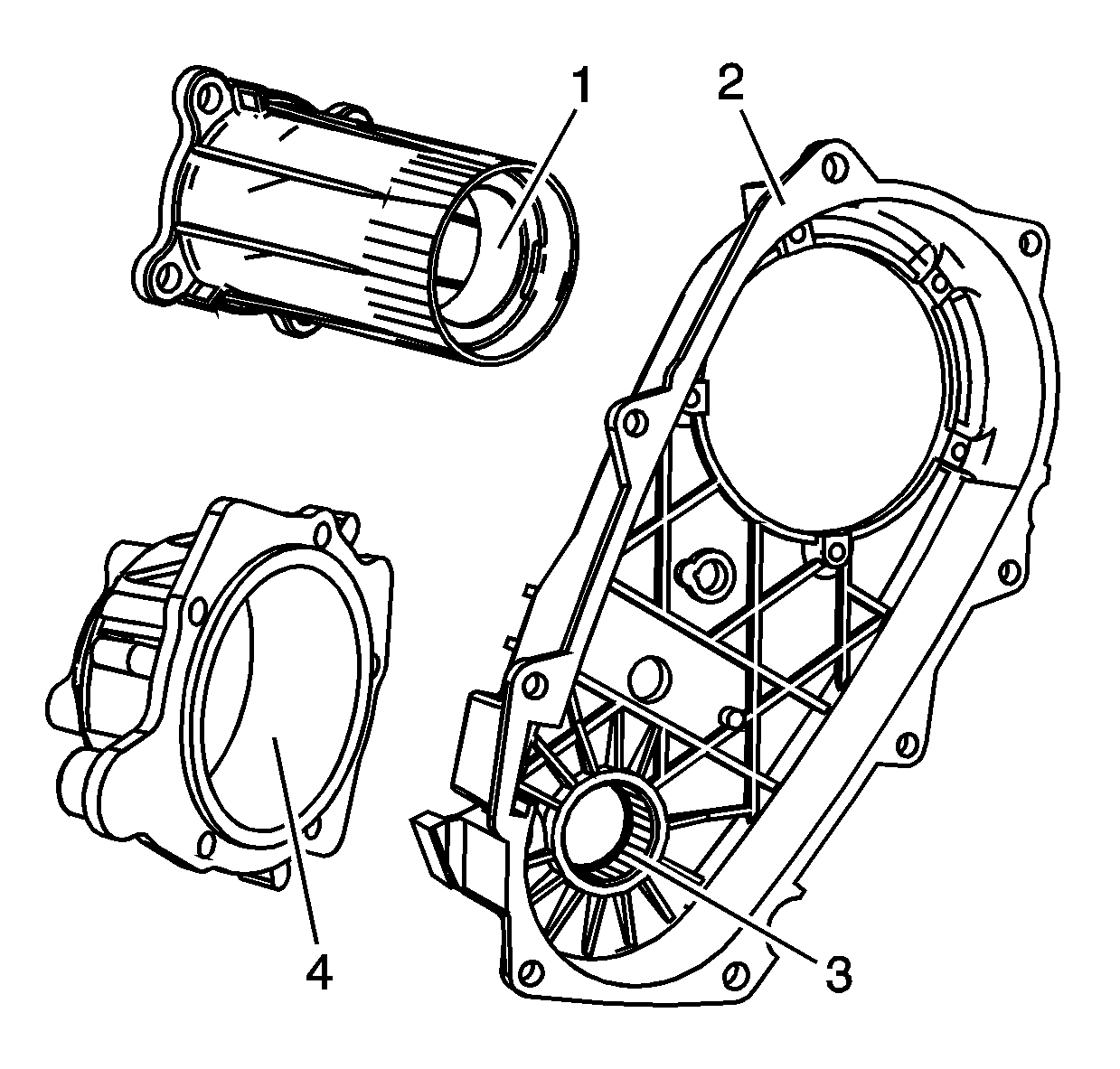
- Clean the rear case half, the extension, and the rear
output shaft bearing retainer in cleaning solvent and air dry.
Notice: Refer to Machined Surface Damage Notice in the Preface section.
- Remove the sealer from the case sealing surfaces.
- Inspect the parts for being broken or cracked.
- Replace the parts if they are broken or cracked.
- Inspect the sealing surfaces (2) for damage.
- Repair small scratches or nicks with a soft stone.
- Inspect the case threaded bolt holes for damage.
- Repair any damaged threads.
- Inspect the front output shaft rear bearing (3) for the following
conditions:
- Replace the front output shaft rear bearing if any of the above conditions
are found. Refer to
Transfer Case Disassemble
and
Transfer Case Assemble
.
- Inspect the rear output shaft bearing for the following conditions:
- Inspect for a spun bearing bore (4) for the rear output shaft
rear bearing.
- Replace the rear output shaft bearing retainer if a bearing has spun.
- Inspect the rear output shaft bushing (1) for scoring or wear.
- Replace the bushing if faulty.
Oil Pump
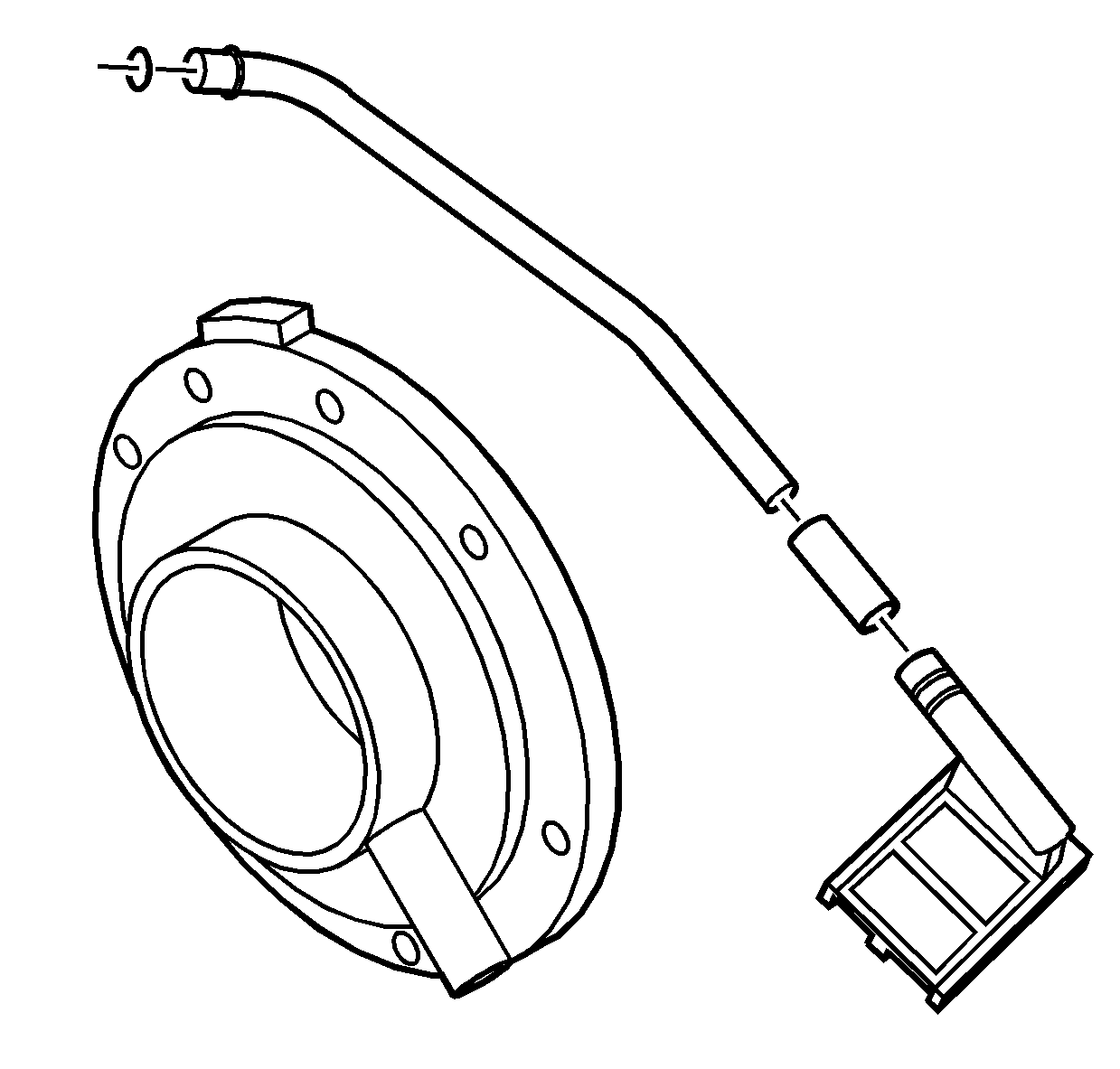
- Remove the oil pump suction pipe and the oil pump
suction hose from the oil pump screen.
- Clean the pipe, hose, and screen in cleaning solvent and air dry.
- If the screen is embedded with debris, replace the screen.
- Inspect the hose for cracking or tears.
- Replace the hose if it is faulty.
- Inspect the oil pump for free movement.
- Replace the oil pump if there is any binding. Do not disassemble the
oil pump. The oil pump is serviced as a unit.
Rear Output Shaft

- Clean the rear output shaft in cleaning solvent.
- Clean the rear output shaft oil galleries (2) and air dry.
Important: Do not attempt to smooth any roughness in
the bearing journals.
- Inspect the input gear pilot bearing surface (1) and the drive gear
sleeve journal surface (4) for the following conditions:
- Inspect the rear output shaft splines (3) for damage or excessive
wear. Witness marks at the location of the gears are normal.
- Replace the rear output shaft if any of the above conditions are found.
High/Low Planetary Carrier

- Clean the high/low planetary carrier in cleaning solvent.
Do not disassemble the planetary carrier.
- Air dry and ensure all cleaning solvent is removed from the bearings
in the planetary gears (3). Do not spin the planetary gears with compressed
air.
- Inspect the planetary gears for chipped teeth.
- Inspect the planetary gears for debris embedded in the root of the teeth.
- Inspect for a washer (4) being on each side of the planetary gears.
- Inspect the low range teeth (1) for damage or excessive wear.
- Inspect the thrust washer surface (2) for scoring or excessive
wear.
- Replace the high/low planetary carrier if any of the above conditions
are found.
- Inspect the high/low planetary thrust washers for excessive wear or scoring.
- Replace the thrust washers if they are faulty.
Drive Chain and Sprockets
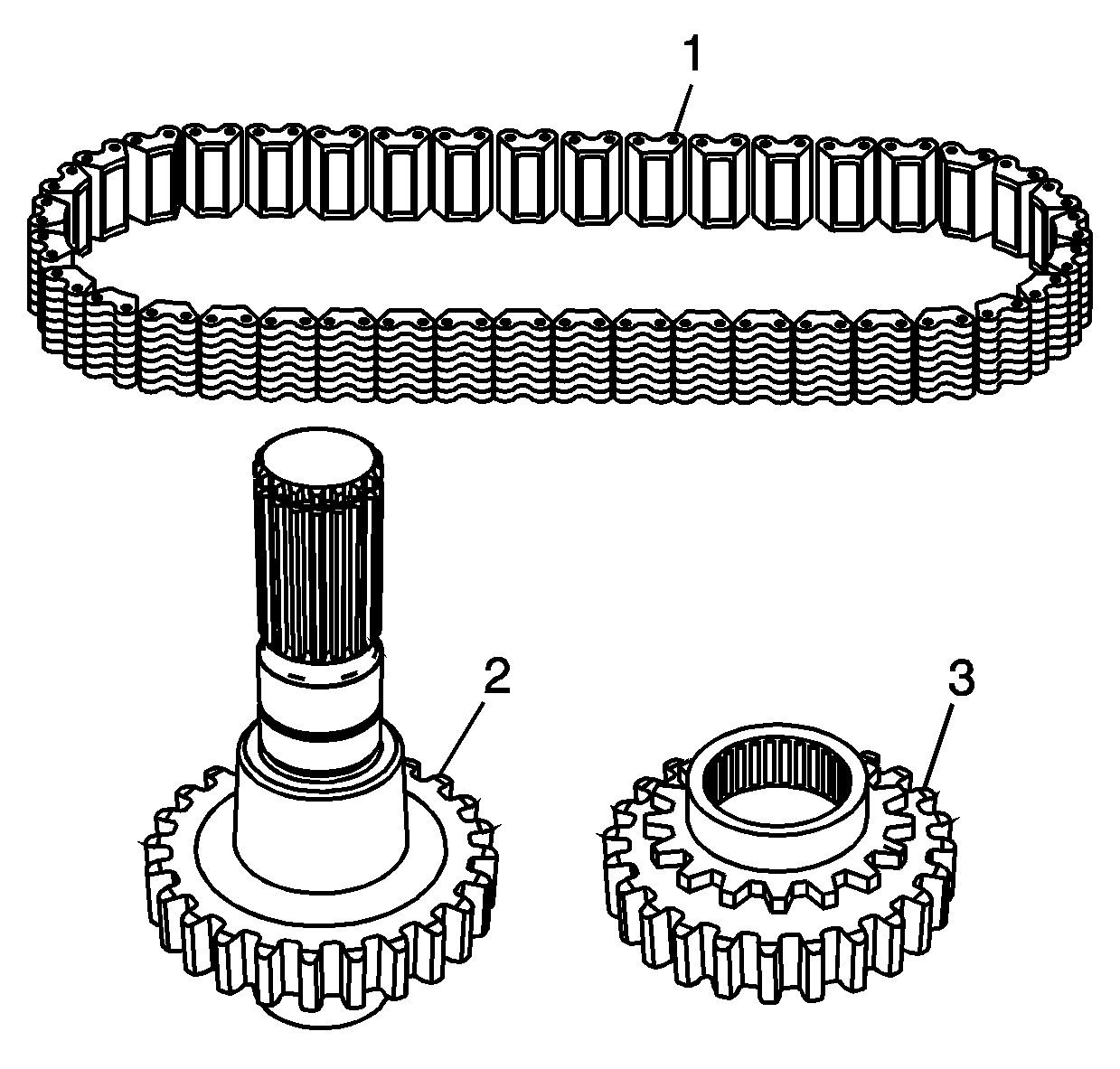
- Clean the drive chain (1), drive sprocket (3),
and driven sprocket (2) in cleaning solvent and air dry.
- Inspect the drive chain (1) for the following conditions:
| • | Debris embedded in the links |
- Replace the chain if any of the above conditions are found.
- Inspect the driven sprocket (2) and the drive sprocket (3)
for the following conditions:
| • | Excessively worn gear surfaces |
| • | Slight wear marks are normal. |
| • | Debris embedded in the root of the teeth |
- Replace the sprocket if any of the above conditions are found. The chain
and sprockets may be replaced separately.
- Inspect the drive sprocket for the following conditions:
- Inspect the synchronizer engagement teeth on the drive sprocket for the
following conditions:
- Inspect the synchronizer blocking ring surface for wear or gouges.
- Replace the sprocket if faulty.
Front Output Shaft
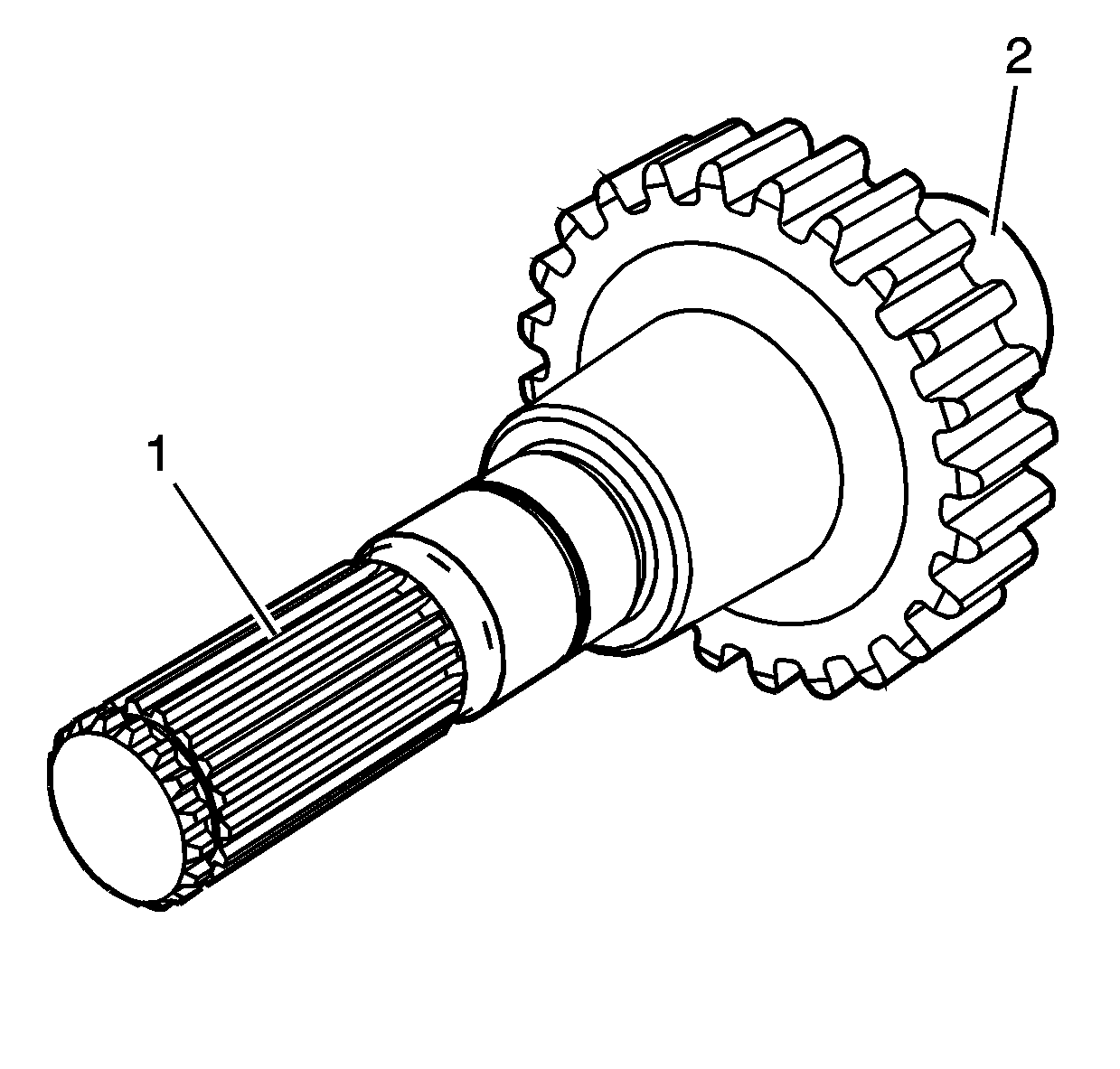
- Clean the front output shaft in cleaning solvent and
air dry.
- Inspect the front output shaft rear bearing race (2) for the following
conditions:
- Inspect the front output shaft splines (1) for damage.
- Replace the front output shaft if it is damaged.
Input Gear
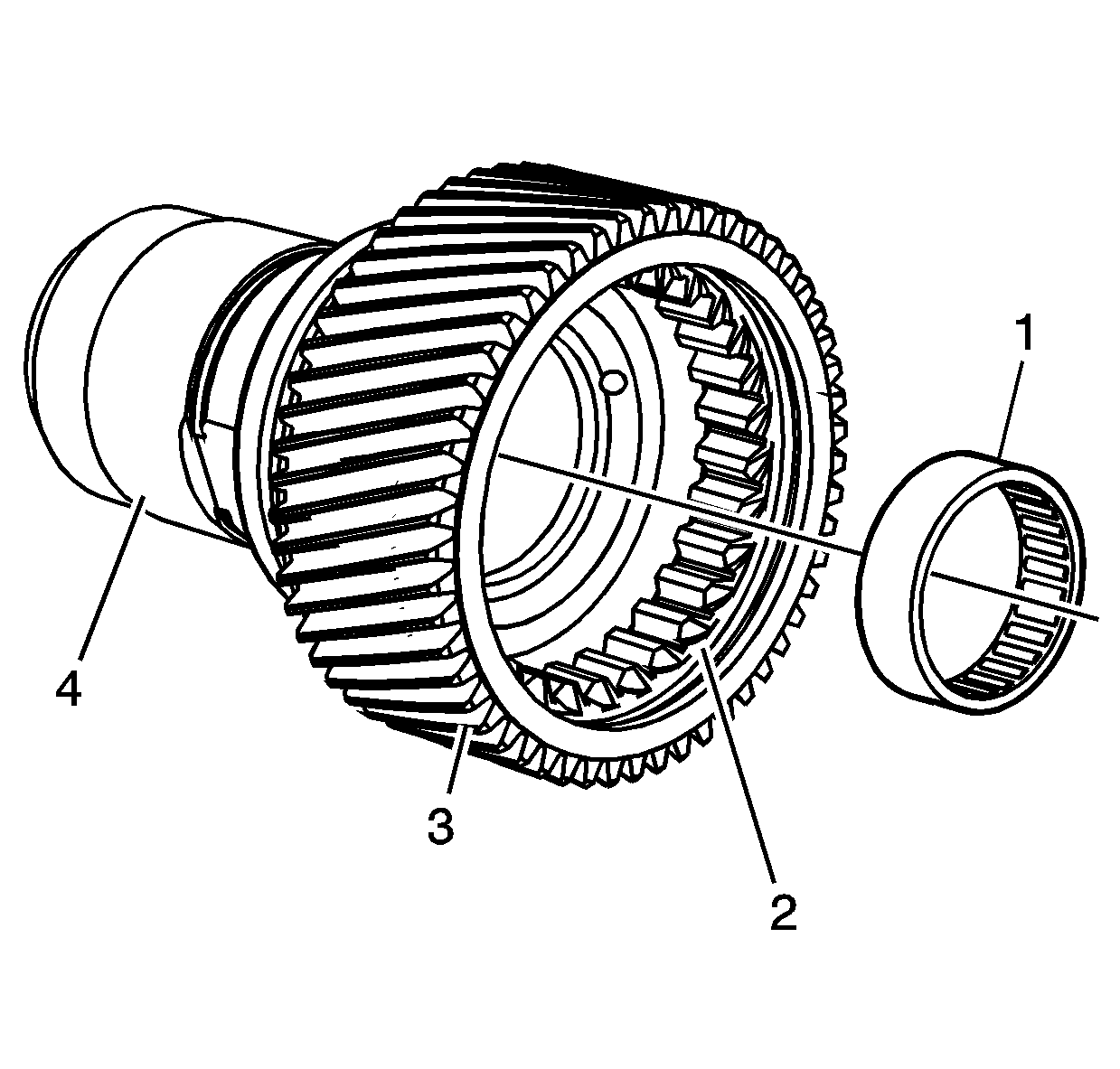
- Clean the input gear, with pilot bearing, in cleaning
solvent.
- Air dry and ensure all solvent is removed from the pilot bearing.
- Inspect the pilot bearing (1) for the following conditions:
- Replace the input gear pilot bearing if any of the above conditions are
found. Refer to
Transfer Case Disassemble
and
Transfer Case Assemble
.
- Inspect the input gear engagement teeth (2) for chips.
- Inspect the input gear for broken or damaged planetary teeth (3).
- Inspect the input gear for debris embedded in the root of the teeth.
- Inspect the input gear seal surface (4) for pitting or excessive
wear.
- Replace the input gear if any of the above conditions are found.
Shift System Components
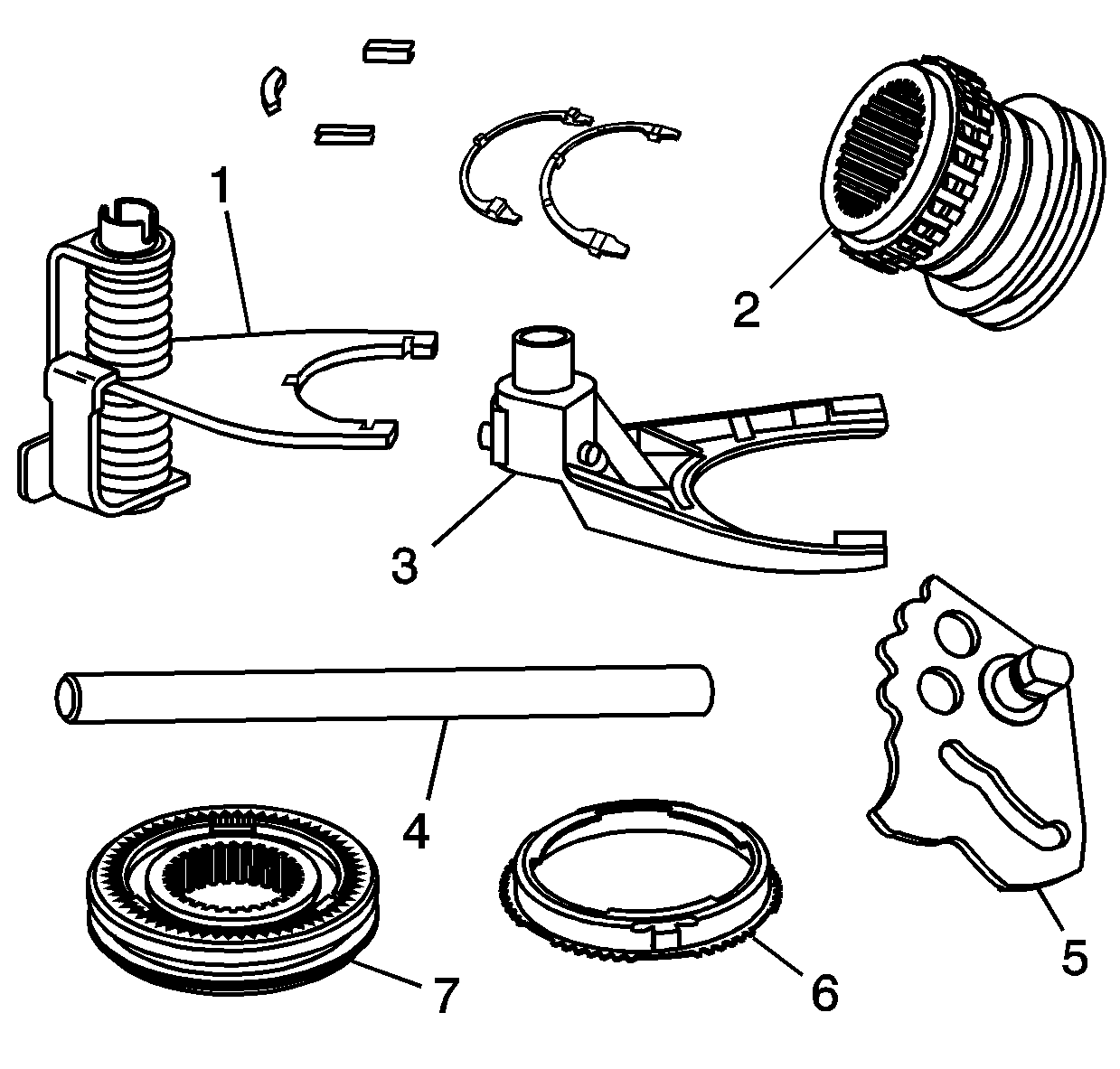
- Clean the following shift system components in cleaning
solvent and air dry:
| • | The high/low shift fork (1) |
| • | The 2/4 wheel drive mode shift fork (3) |
| • | The shift fork shaft (4) |
| • | The synchronizer blocking ring (6) |
| • | The synchronizer assembly (7) |
- Inspect the shift fork shaft for straightness (4).
- Replace the shift fork shaft if it is not straight.
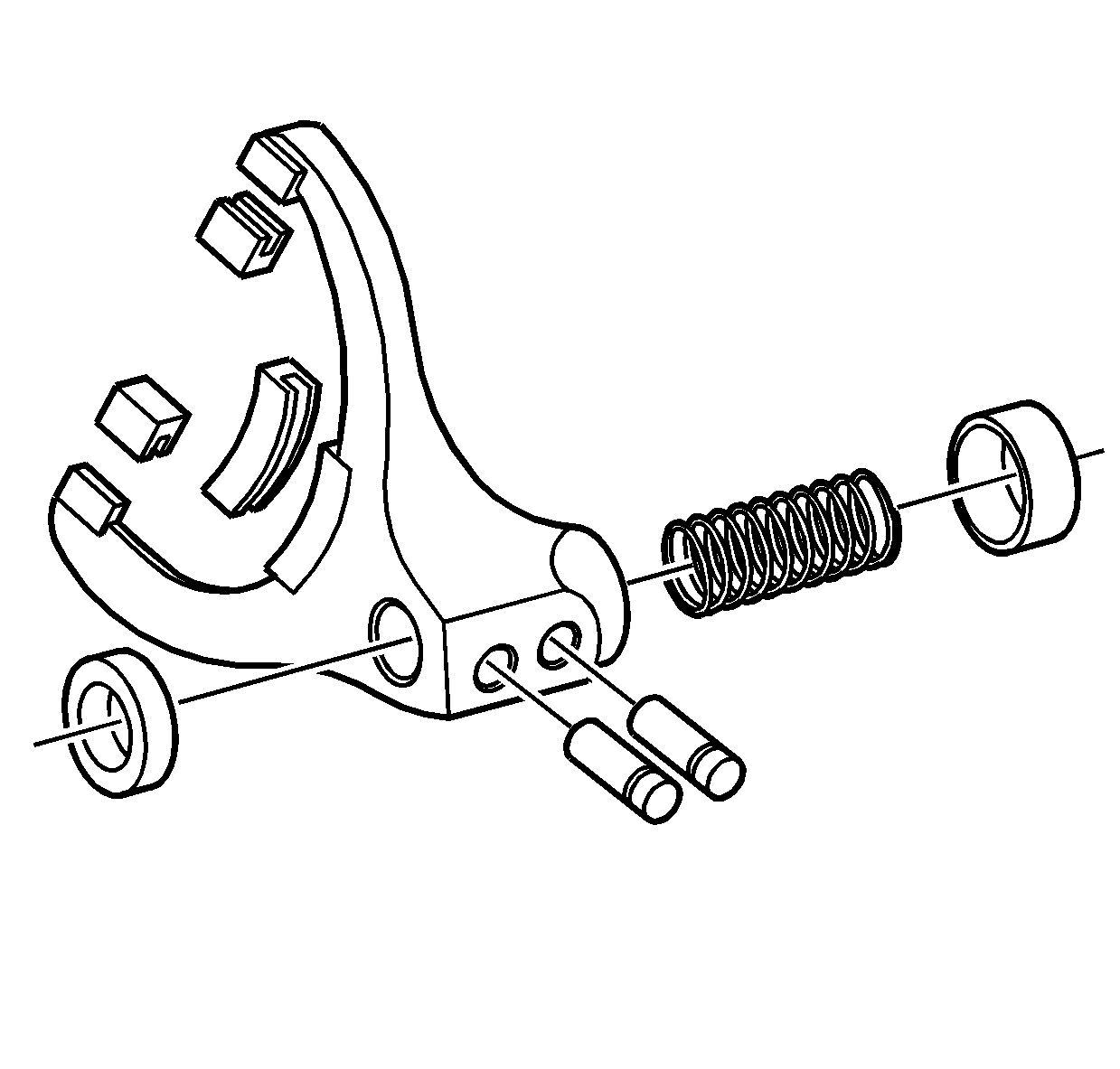
- Inspect the pads on the 2/4 wheel drive mode shift
fork for wear.
- Inspect the roller on the shift fork for wear.
- Replace the shift fork if the roller is worn or the pads are worn.

- If 1st design, inspect the pads (2) on the
shift fork for wear.
- If 2nd design, inspect the pads (1) on the shift fork for wear
or breakage.
- Replace the worn or broken pads.
Important: Only disassemble the shift fork assembly
if replacing a faulty component.
- Inspect the following components of the high/low shift fork assembly for wear
or damage:
- Replace the high/low shift fork as an assembly if any of the above components
are faulty.
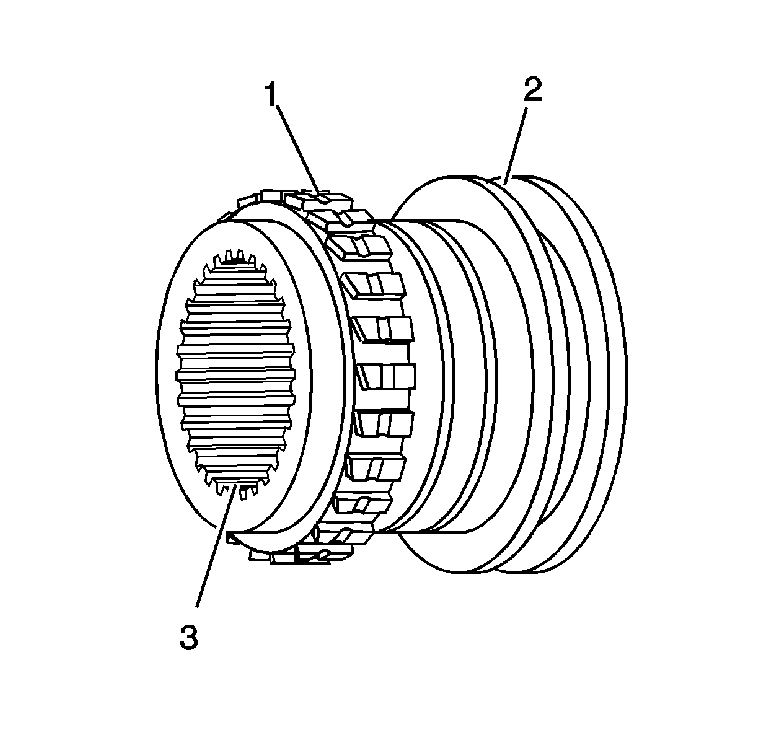
- Inspect the range sleeve for chipped or excessively
worn teeth (1).
- Inspect the shift fork collar (2) on the range sleeve for wear.
- Inspect the inner splines (3) of the range sleeve for excessive
looseness on the rear output shaft.
- Replace the range sleeve if the above conditions are found.

- Inspect the high/low shift fork roller slot (2)
on the sector shaft for wear or roughness.
- Inspect the bearing (1) and the seal surface on the sector shaft
for the following conditions:
- Inspect the 2/4 wheel drive mode shift fork cam lobes (3) on the
sector shaft for wear or roughness.
- Inspect the detent plunger cam lobes (4) for wear or roughness.
- Replace the sector shaft if any of the above conditions are found.
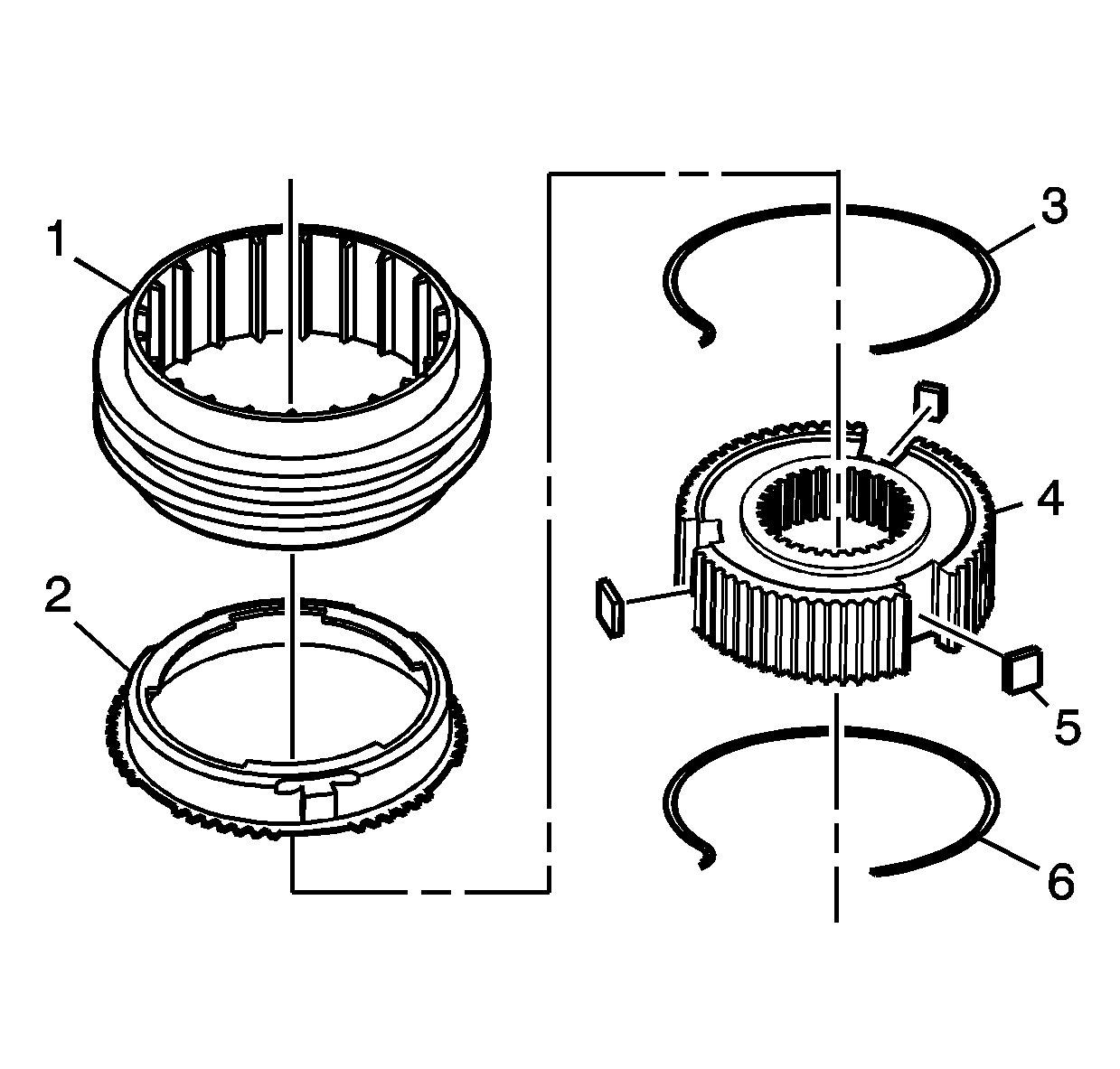
- Inspect the synchronizer blocking ring (1)
for wear and roughness.
- Inspect the synchronizer sleeve (2) for the following conditions:
| • | Wear on the engagement teeth |
| • | Wear in the insert notches |
- Inspect the synchronizer hub (4) for the following conditions:
| • | Loose fit on the mainshaft |
| • | Broken or damaged insert springs (3 and 6) |
- Replace the synchronizer assembly if any of the above parts are faulty.














